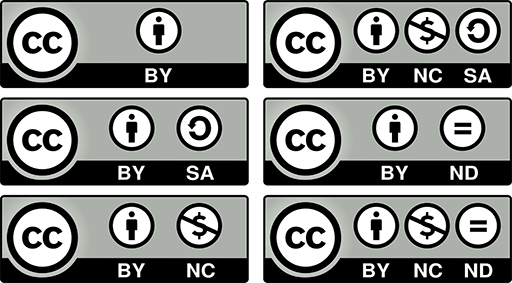Creative Commons licences
When a piece of creative work such as an image, video or textbook is produced, the creator of the work has certain legal rights that may restrict the ability of others to reuse or adapt that material without seeking permission from the author.
This is known as
However, the absence of the copyright symbol does not necessarily mean the work is within the public domain and available to use – on the contrary, copyright must be assumed to be in place unless stated otherwise. Creative Commons (CC) licensing has made all this much easier.
Now, thanks to Creative Commons licences, when you find materials on the internet that you would like to use in your online teaching you can tell at a glance whether you can reuse the item, whether you can modify it, whether you can use it to make money, and whether you need to apply an identical licence onto your own resulting work.
All of this is conveyed by the particular type of CC licence, indicated by four symbols and initials: BY, NC, ND and SA, shown in the diagram below.
Activity: Creative Commons licences
This video Creative Commons Kiwi explains the four different symbols you may find on a Creative Commons licence, and the six possible combinations of these. It was made for New Zealand but CC licences are the same throughout the world.
Watch it now and make your own notes on the four symbols and their meanings so you can refer to them in the future.
Discussion
The four Creative Commons licence elements are:
- BY = attribution: You must acknowledge the author/source of the material (i.e. who it is ‘by’).
- NC = non-commercial: You must not use the material for anything that is intended to make money.
- ND = no derivatives: You do not have permission to change the material in any way.
- SA = share alike: If you use the material for any newly created resources you must share them under the same licence.
Open Educational Resources (OERs)

